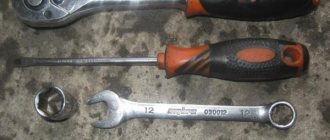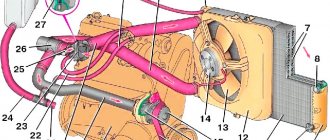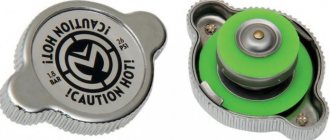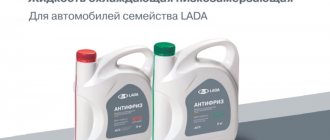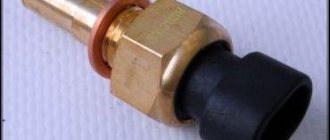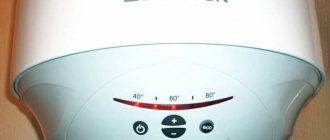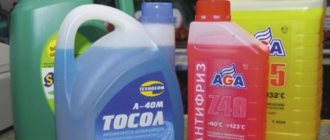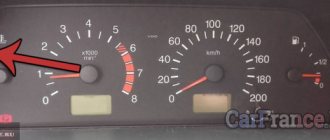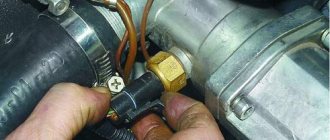How to calculate correctly?
To begin with, it is worth taking such a useful parameter for work as motor efficiency. The efficiency is usually about a quarter (25%). And everything else goes to various physical (including thermal) losses (which is essentially what we need).
About a third of all energy is spent on such a parameter as heating.
- We will carry out calculations based on the total engine power. Typically, this power is indicated at the moment at the maximum value of engine speed (or in other words, it is indicated at the highest speed, for example at a value of 4000 - 6000; different manufacturers take everything into account differently).
- For a simpler calculation, we take a standard one hundred horsepower engine (100 hp) and convert the resulting power to KILOWATTS.
- To do this, divide 100 by 1.36 equals 73.55 kW (here it is worth considering that 1 kW equals 1.36 hp). It is also worth remembering that this power is calculated at the highest speed.
As a result, the value obtained is 30 percent (this is exactly the amount the motor spends on energy losses). Just think how much this is! It turns out that more than 22 kW is used for heating.
Why is a large volume of coolant dangerous?
Many novice car owners make a common mistake: they fill in antifreeze or antifreeze at maximum risk. They think that in this way they cool the engine better, preventing it from overheating and serious malfunctions. However, in reality, if there is an excess amount of antifreeze in the system, the pressure increases, the tank cannot properly relieve pressure, as a result, either leaks appear at the connections, or the plastic container may simply rupture if the engine overheats seriously.
If there is excessive pressure in the system, antifreeze can leak under a loose valve cover. This leads to improper fuel combustion, and the rare earth coating of the cylinders begins to burn out. Ultimately, the piston group needs to be replaced, and such a repair is comparable in complexity and cost to a major one. Moreover, such malfunctions could be easily avoided by maintaining the correct volume of coolant in the system.
An increase in pressure in the system negatively affects the performance of the thermostat and pump. The pump cannot operate correctly in such conditions, the load on its impeller increases, which leads to failure of the pump, after which expensive and complex engine repairs are required. Similar problems with the pump can also occur with a minimum level of antifreeze.
To avoid such problems, the car owner will need to monitor the level of coolant in the expansion tank, try to keep the volume in the middle between maximum and minimum, but if the antifreeze runs out quickly, then appropriate diagnostics should be carried out, the location of leaks should be determined and the car should be repaired.
Another consequence of improper pressure in the cooling system is engine overheating. It would seem that the more antifreeze in the system, the better the engine is cooled, but the pump and antifreeze cannot function properly in such conditions, as a result of which the engine overheats. Problems appear with the valve stem seals, the lubricant in the channels begins to coke, and as a result, it is necessary to open the engine and carry out complex and expensive repairs.
conclusions
The car owner needs to remember that low and high levels of antifreeze in the expansion tank will be equally harmful to the car. This not only leads to improper cooling and various types of breakdowns of both the cooling system and the entire engine as a whole. It will be necessary to monitor the condition of the cooling system, add antifreeze if necessary, using only high-quality coolant, which is changed in full accordance with the recommendations of the car manufacturer.
How much antifreeze is in a car's cooling system? This question, friends, is often asked by novice car owners. And really, what is the optimal amount of coolant needed? Let's figure this out, but before giving an answer, it is necessary to delve into the design of this system and the features of its operation, then everything will fall into place. Let's get started.
How much antifreeze is required to work?
Some will argue about what is better for cooling: TOSOL or antifreeze, I will answer briefly - antifreeze is more effective in many respects and is almost always superior to antifreeze. In short, many antifreeze options for engine cooling systems (for example G12 - G13) significantly exceed the ANTIFREEZE values, which is why antifreeze almost always has better characteristics.
Any motorist needs to understand how much antifreeze is recommended to be poured into his car and exactly how to fill it correctly. To do this, you should read the machine maintenance book and follow the instructions. If the document cannot be found, in this case it is better to take the advice of professional repairmen.
The amount of liquid that you fill during replacement is on average about 3 liters. Experienced specialists will tell you a more accurate parameter. But at the beginning it is recommended to fill in approximately 3.2 liters of the substance. After this, the Priora is started and turned on for a few minutes, then
Engine radiator
A classic working radiator in a car dissipates approximately 2 kW of heat even in its quiet state. At the lowest temperatures, the dispersion rate only increases.
- It is important to take into account that the car also has a heater radiator (pipes, etc.); in its normal operating state, approximately 0.5 kW is dissipated, and when the engine blowing system is actively operating, it is capable of delivering up to 2 kW of energy.
- The composition of modern antifreezes makes it possible not to worry about the overall level of engine performance, even with long replacement intervals.
- The main criterion for selecting a suitable product is the manufacturer.
- The main characteristic that a buyer should pay attention to when purchasing antifreeze for a cooling system is its generation.
Cooling system design
Regardless of what fuel the internal combustion engine runs on, the cooling system consists of the same elements. The system design includes:
- radiator;
- fan;
- Control block;
- heat exchanger;
- thermostat;
- expansion tank;
- water pump (pump);
- connecting pipes and valves.
The coolant is poured into the expansion tank, which, in turn, compensates for possible changes in the amount of liquid in the cooling system. Next, antifreeze is supplied to the system under pressure, which is formed using a pump. The coolant's job is to pass through the planes of the cylinder block and ultimately enter the radiator.
Coolant circulation diagram
And so, we have revealed the secrets of the car engine cooling system. Now let's look at the coolant circulation diagram.
The average car, regardless of whether it has a gasoline or diesel engine, has the following elements of the cooling system:
- cooling jacket of the motor itself;
- radiator;
- radiator fan;
- thermostat;
- centrifugal pump (pump);
- expansion tank;
- heat exchanger;
- a set of connecting tubes and valves;
- Control block.
Cooling jacket
The key detail on which the quality of performance of the main task of the system depends is the cooling jacket. This is a set of antifreeze channels made in the immediate vicinity of the cylinder block and engine block head.
Radiator
Without it, the liquid heated in the engine will not be able to cool, giving off heat to the environment. The fan helps the radiator.
Fan
The fan increases the incoming air flow, thereby improving heat transfer.
Thermostat
An important element. Controls the temperature of antifreeze by opening or closing its access to the radiator. The more intense the load on the engine, the more heat it generates and the more fluid will pass through the radiator.
water pump
The engine temperature should be at 80-90 degrees - no less and no more. The next item on our list is the pump. Provides coolant circulation.
Expansion tank
Performs several functions.
Firstly, it compensates for the change in liquid volumes in the system, which, as we know from a school physics course, is inevitable when heated.
Secondly, it is into it that we pour new portions of antifreeze.
Heat exchanger
Thanks to the heat exchanger, warm air is supplied to the air conditioner or interior heater.
Control block
In a modern car, this is an electronic circuit that, based on information from various temperature sensors, issues commands to actuators (thermostat, fan, pump).
How to change antifreeze?
After we found out how much antifreeze was in the engine cooling system, all that remained was to replace it. All work on replacing coolant can be divided into several main stages:
- Wait until the engine cools down completely. Changing antifreeze when the engine is hot is very dangerous, since the coolant temperature is 95-100°C.
- Place an empty container under the radiator drain plug and open it.
- Drain the old antifreeze.
- Flush the cooling system, first checking all hoses for mechanical damage.
- Many people do not know how many liters of antifreeze are in the cooling system. Fill in as much liquid as the number of liters the expansion tank is designed for.
- Start the car and turn on the heater in the cabin so that the antifreeze is evenly distributed throughout the system.
As you can see, there is nothing complicated about replacing a car’s coolant. Please note that if there are traces of rust in the old antifreeze, you should contact a car service center about this problem as soon as possible.

